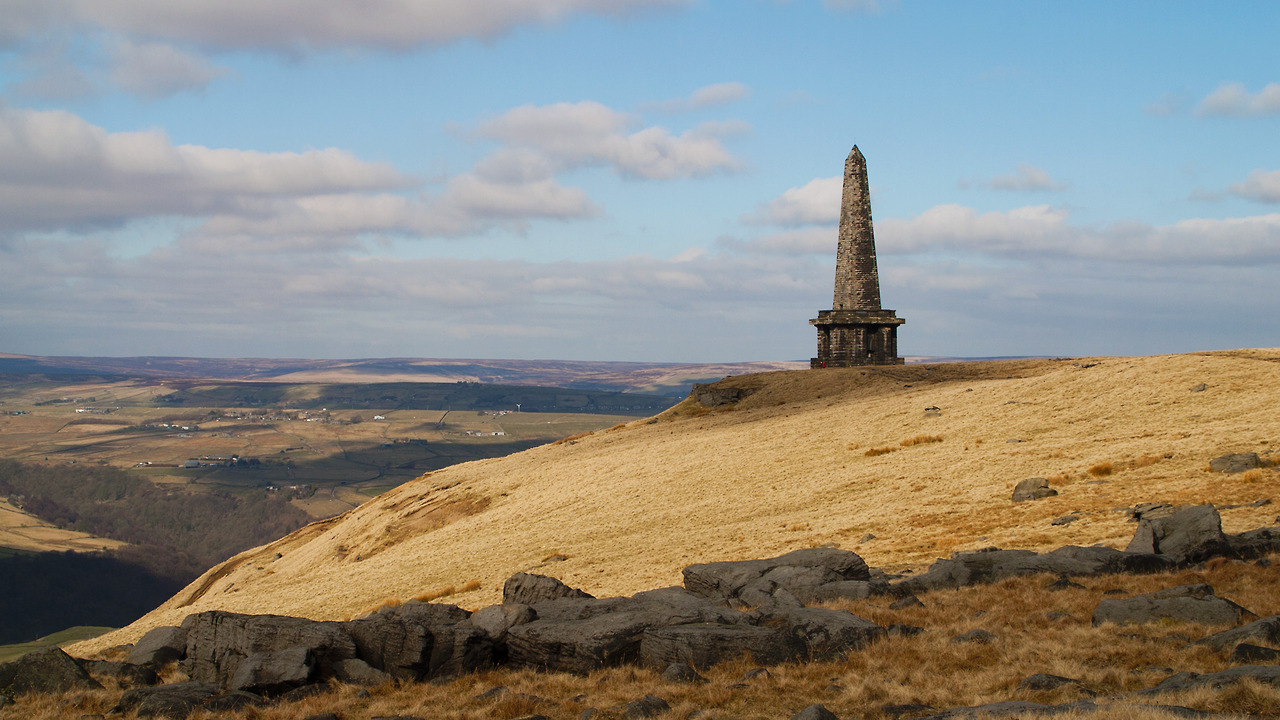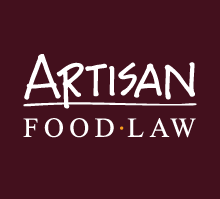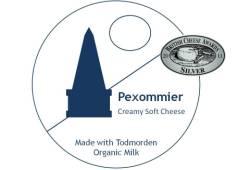Pextenement Cheese Company – a Calder Valley food find and carbon friendly cows too
On the morning of my visit to Pextenement Farm I came, by chance, upon an article in the US Farmers Weekly headed ‘Cheese producers urged to focus on breed for carbon reduction’. Not all cows, it seems, are the same. The lighter weight Jersey versus the Holstein uses significantly less land and water resulting in a 10% reduction in carbon emissions when the milk is used in cheese. The reasons are several but fat content is a big factor, Jersey milk has 4.8% fat as against the Holstein’s 3.8% which means more milk solids for cheese. I was curious how Pextenement would fare here.

Pextenement Farm is halfway between Hebden Bridge and Todmorden, up on the opposite side of the valley to where, in all its glory, stands Stoodley Pike. On this occasion looking particularly stunning in the sun surrounded by a heavy frost. The Farm and surrounding buildings date from the 16th century and cheese is made in a small part of the barn now returned to its original use as a dairy with clearly plenty of room to expand.
Carl Warburton greeted me warmly and provided a brief resume of how he came to leave HBOS just as things were going pear shaped and set about building The Pextenement Cheese Company in 2008. He explained how production started at the beginning of 2010, barely two years ago, but in this short space of time he now makes quite a range of different cheeses including: East Lee, a fresh soft cheese; Pexo Blanco, a semi-hard cheese for use in cooking; Pike’s Delight, a cheddar style cheese matured for 8 months and, what I had come for and easily the most successful, Pexommier – think ‘Coulommiers’ and you’ll get the idea. There’s also Devil’s Rock Blue, a soft blue cheese, about to be launched, more about this later.
My main task, since the cheese room does not afford much space for working, was to keep out the way but I managed a token contribution towards the end of the process. The milk, all 220 organic litres at a time, comes a few hundred yards from the neighbouring family dairy farm. Carl puts the milk through a pasteuriser in a small room next door to the cheese room. He tried raw milk at the outset but wasn’t convinced it was the right way to start, but may revisit this in the future. I arrived just before the moment at which cutting the curd took place.
It takes roughly a litre of milk to make a 170g Pexommier cheese 9 cm in diameter, so we could expect a good 200 that afternoon. At 32 oC and about an hour after cutting Carl declared the curds ready to go into the cheese baskets. Temperature, it seems, is the critical factor at all stages of the process.
While the curds drained and sank to the bottom of their baskets, Carl and James, his assistant, performed a swift and efficient scrub down of the cheese room after which it was time to turn the Pexommiers and my chance to help. I managed, at Carl’s invitation, to turn a half dozen or so of the incredibly soft cheeses in the time Carl and James turned the other 200 plus cheeses in a skilled and quite rhythmical way.
Carl will turn the cheeses once more first thing in the morning before they receive a brine wash and a dip in a solution of penicillin which allows the characteristic soft white bloom to develop on the mature cheese. The final stage is 10 – 14 days maturing at a temperature of about 12oC before delivery to numerous local retailers and restaurants. Pexommier has a shelf life of 28 days and really needs a good time at room temperature if you are to experience that distinctive rich creamy taste. Carl made over 100 attempts to get the technique right when he started, but now has an artisan cheese fully deserving of the Silver Medal it gained at the British Cheese Awards in 2011. There’s even a special heart shaped version for Valentine’s Day!
We sampled, as a reward for all my hard work, some Pike’s Delight, 8 months old but still very youthful, an impressive Brie and a quite mild Pike’s Delight Blue, but for me it was the Devil’s Rock Blue that was the real star, a soft, delicate blue and lusciously creamy, named after the ominous rock perched at the top of the hill behind the Farm.
So what about those cows? I learned that the family have a mixture of breeds in their closed herd, but they produce a high 4.4% fat milk - not quite that of a Jersey but much better than the standard 3.8% and so carbon friendly too! Carl has come up with something really rather special, Pextenement cheese will be making regular appearances on our table! It will soon be available online too, so you can all try it.
Carl has posted a series of photos illustrating the story of Pexommier, you will find it here and for a review of Pexommier by North/South Food click here. North/South Food are also featuring Pextenement cheese as a part of the vegetarian option in their forthcoming JoinUS4Supper evening in Manchester on 23 February 2012, click here for details, but be quick to book, tickets are going fast.
The Pextenement Cheese Company, Pextenement Farm, Eastwood, Todmorden, West Yorkshire OL14 8RW Tel: 07725 517934 E-mail: info@pextenement.co.uk Web: www.pextenement.co.uk





